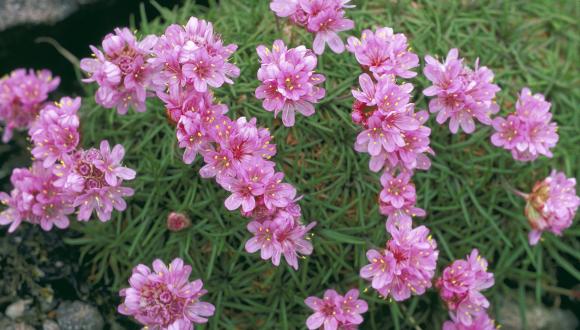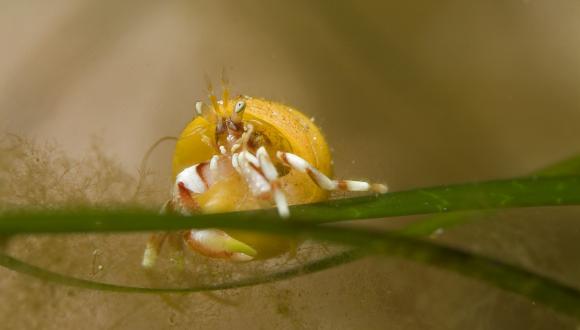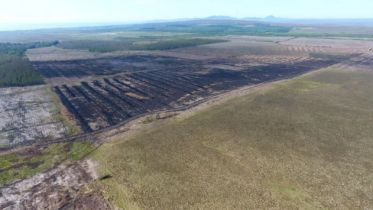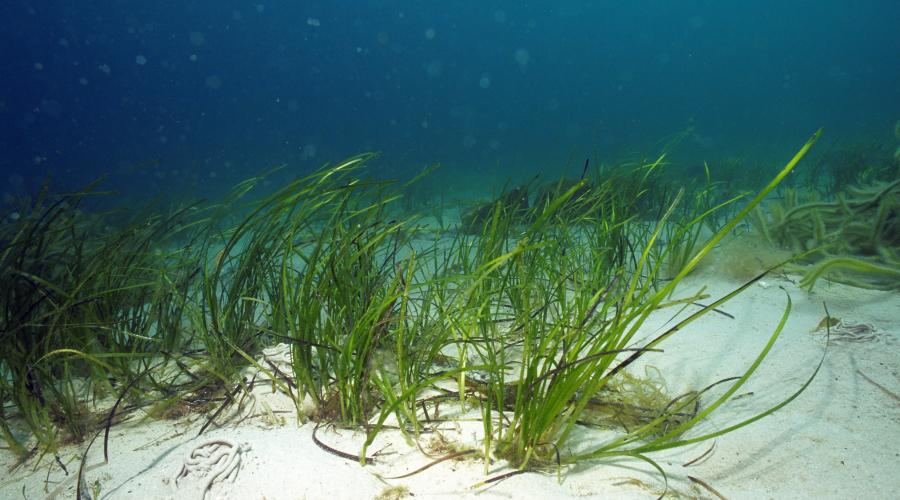
Seagrass
Seagrasses form beautiful underwater meadows that are havens for marine wildlife, and nursery areas for commercially important species.
Seagrass beds include beds of the two eelgrass species; common eelgrass (Zostera marina) and dwarf eelgrass (Zostera noltei), as well as tasselweed (Ruppia maritima) beds
Seagrass beds are a Priority Marine Feature in Scotland’s seas. Seagrass beds provide shelter for all sorts of other life, increasing biodiversity, so it’s critically important that we protect them.
Seagrass beds provide:
- shelter among the swaying plant leaves for many different species of fish – e.g. the pipefish, a relative of the seahorse
- nursery areas for several species of flatfish, like the commercially valuable plaice and flounder
- an important source of food for wildfowl such as the wigeon (where found in estuaries)
- habitat for many small invertebrates, which attach to plant leaves
- protection for burrowing anemones, bivalve molluscs and burrowing urchins that lie buried in the sand beneath
- shelter for native oysters, now very rare in Scotland
- roots which stabilise the sediment, helping to prevent erosion of the seabed
Eelgrass beds grow in shallow coastal areas on sheltered sandy or muddy seabeds, or with maerl, from areas exposed at low tides to depths of about 10m. They often inhabit places with a gentle tidal current. Tasselweed beds tend to grow in brackish lagoons and lochans where freshwater dilutes the seawater.
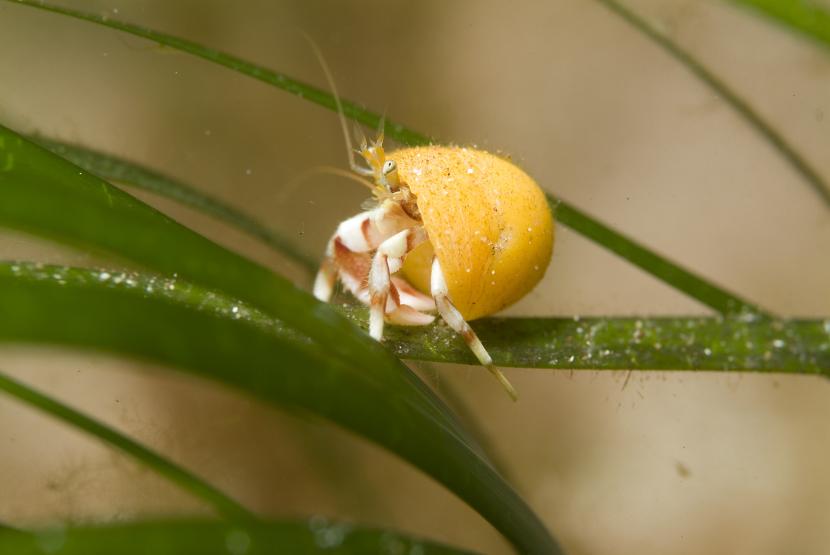
A hermit crab on a blade of seagrass. ©NatureScot/Graham Saunders
Threats to seagrass beds
Seagrasses grow best in undisturbed, clean water. It’s important to protect seagrass beds from:
- pollution – high levels of nitrates (from urban wastewater or farm run-off) have been linked to declines in a number of sites
- trampling and dredging
- coastal development close to where they grow
- non-native invasive species such as cord-grasses in their habitat
More information on the sensitivities of seagrass can be found at Scotland’s Feature Activity Sensitivity Tool (FEAST). In the 1930s a significant proportion of the eelgrasses around Britain died from a wasting disease.
Protection of seagrass beds
Seagrass beds are a Priority Marine Feature, a UK BAP habitat and an OSPAR threatened and declining habitat.
Seagrass beds are protected in 26 locations around Scotland by a suite of Marine Protected Areas shown in the map below:
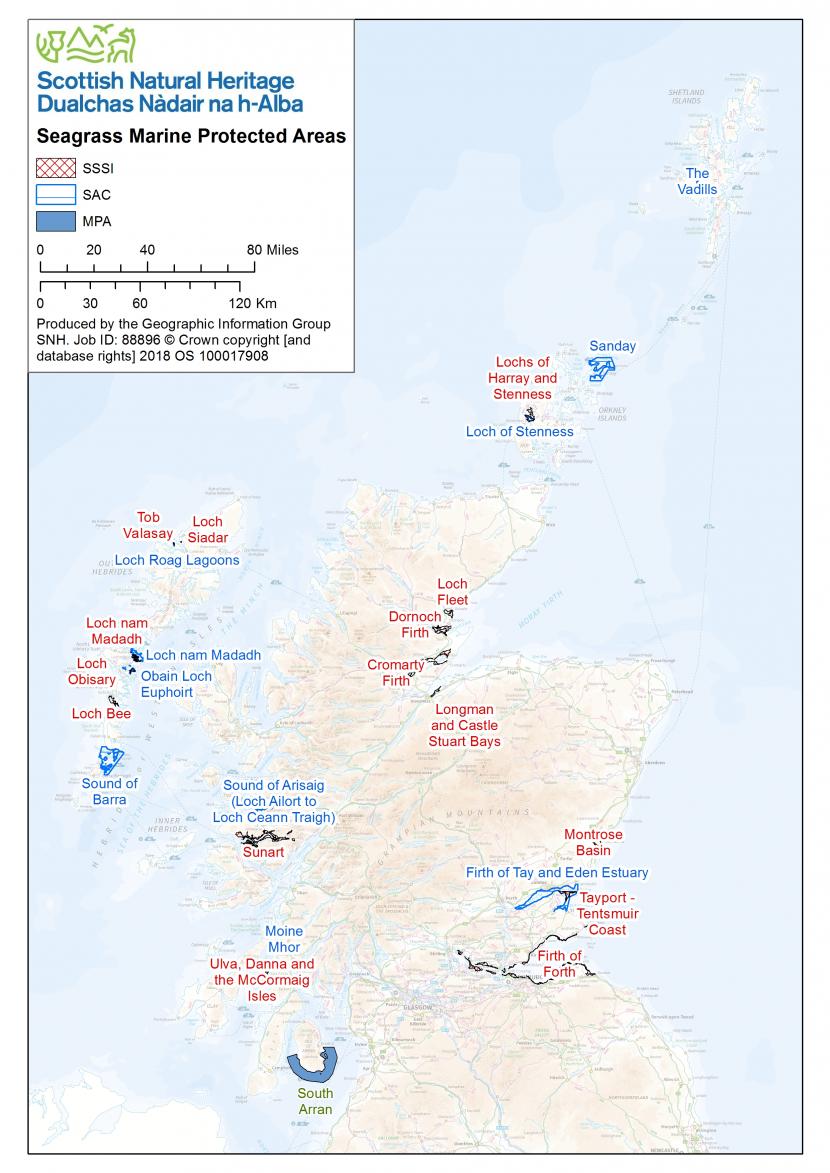
More information on the sites and how they are managed can be found at NatureScot’s Sitelink and on the Marine Scotland web pages for some sites. For a number of sites detailed survey and monitoring reports also exist.
Many different fish and small invertebrates live amongst seagrass beds, sheltering between the swaying leaves of the plants. They make an ideal home on Sound of Barra.
Find out more
Read our blog - Eelgrasses - flowers beneath the tide
Read the full NatureScot Research Report 1286 - Seagrass restoration in Scotland - handbook and guidance
Read our latest news release - Scotland's first seagrass restoration guide
